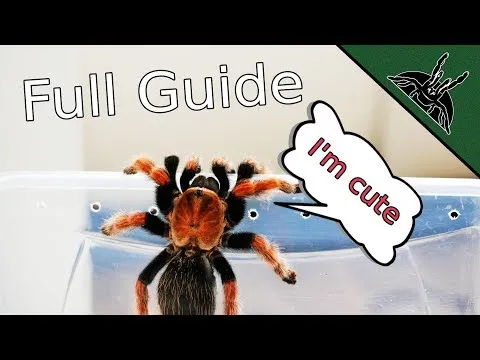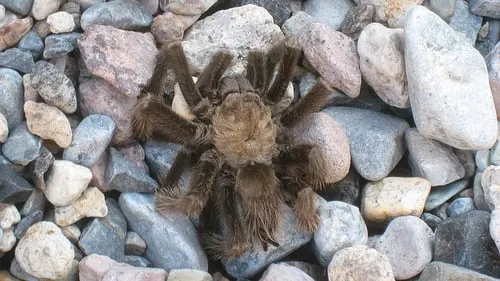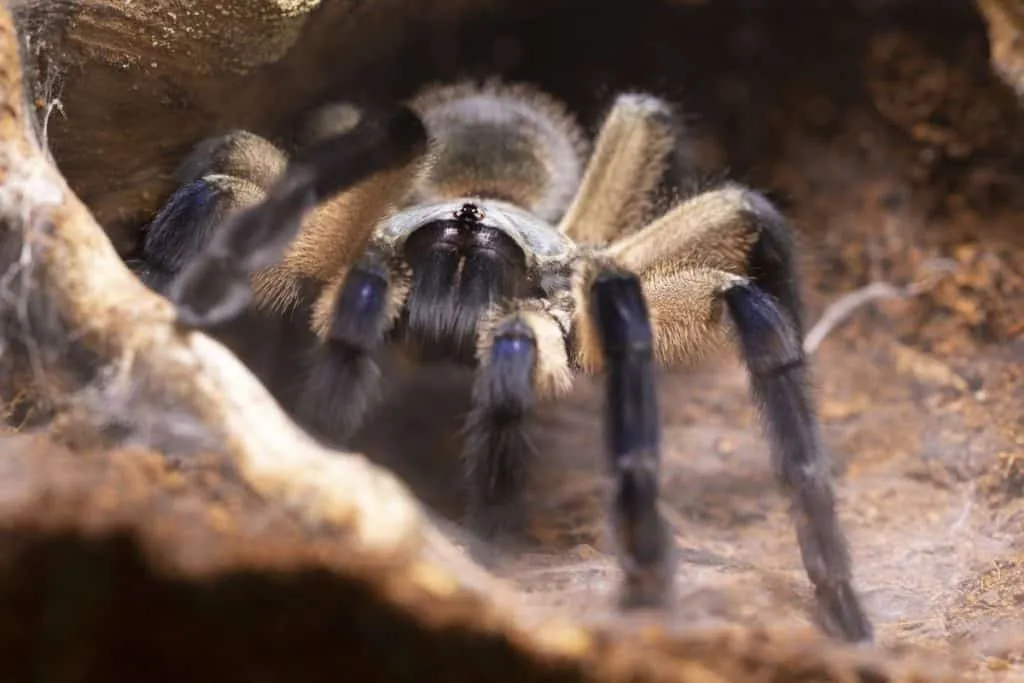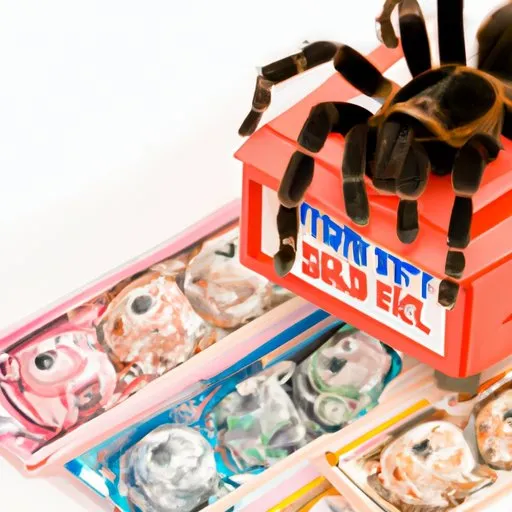The allure of owning a tarantula is undeniable for many pet enthusiasts. These fascinating arachnids offer a unique pet-keeping experience, but potential owners often wonder about the financial commitment involved. Understanding the factors that influence tarantula cost at stores like PetSmart is crucial for responsible pet ownership. This guide breaks down the top 5 cost factors to help you make an informed decision before bringing a tarantula into your home. From the species you choose to the ongoing care, we’ll explore the various elements that contribute to the overall expense.
What Determines Tarantula Cost at PetSmart
Several key elements determine the final price tag of a tarantula at PetSmart. These factors range from the specific type of tarantula to the costs associated with its habitat and upkeep. By examining these variables, potential owners can better prepare their budgets and ensure they can adequately provide for their new pet. The initial purchase price is just one aspect; ongoing expenses like food, substrate, and potential veterinary care must also be considered. This overview will provide a clear understanding of what to expect.
Species of Tarantula
The species of tarantula is a primary determinant of its cost. Different species exhibit varying levels of rarity, popularity, and ease of care, which directly impact their market value. Some species are more readily available and therefore less expensive, while others, especially those with striking colors or unique characteristics, can command higher prices. Researching the specific species you’re interested in is essential for understanding its associated costs and care requirements.
Common PetSmart Tarantula Species

PetSmart typically carries a selection of common tarantula species that are well-suited for beginners. These may include the Mexican Red Knee (Brachypelma hamorii), the Curly Hair tarantula (Tliltocatl albopilosus), or the Chilean Rose Hair (Grammostola rosea). These species are generally more affordable due to their wider availability and relative ease of care. Expect to find these species ranging in price from $20 to $50, depending on the size and age of the specimen.
Rare Tarantula Species and Cost
Rare or less common tarantula species are often more expensive. These might include species with vibrant colors or unique behaviors, or those that are challenging to breed. These species are more likely to be found through specialized breeders or online vendors rather than PetSmart. The cost can range from $75 to several hundred dollars, depending on the species’ rarity, demand, and origin. Thorough research on the specific species, including its temperament and care needs, is crucial before committing to such a purchase.
Size and Age of the Tarantula
The size and age of a tarantula also significantly influence its price. Generally, younger tarantulas, often referred to as spiderlings, are less expensive than adult specimens. This is because they require less food and have a longer lifespan, making them a long-term investment. However, smaller tarantulas may be more delicate and require more careful handling and monitoring. The price often increases as the tarantula matures, with larger, more established specimens commanding a higher price.
Young vs Adult Tarantulas

Spiderlings are generally the most affordable option, but they demand more patience and experience. Adult tarantulas, on the other hand, are fully grown and offer a more immediate display of their characteristics. Adults are also easier to sex, which is important if you are interested in breeding them. The price difference can be substantial, with adult tarantulas costing considerably more than juveniles. Consider your experience level and long-term goals when choosing between a juvenile or an adult tarantula.
Impact of Size on Cost
As tarantulas grow, their cost increases. Larger specimens require more resources, and they may be more challenging to handle, which can increase their value. The size also affects the cost of the enclosure and other supplies. A larger tarantula will need a bigger enclosure, potentially leading to higher initial and maintenance expenses. Always assess the size of the tarantula and its projected growth to anticipate the costs of its housing and care.
Morphs and Color Variations
Certain tarantula species exhibit different color variations, also known as morphs. These variations can significantly impact the price, as some morphs are rarer or more visually striking than others. The demand for specific morphs will increase their value, similar to other pets. For example, a tarantula with vibrant colors or unique patterns may fetch a higher price than a standard-colored specimen, even within the same species.
Cost of Different Morphs

The cost of a particular morph depends on its rarity and the breeder’s pricing. Some morphs are the result of selective breeding, which may also increase the overall price. It is essential to research the morph you’re interested in and compare prices from different sources. Prices can vary widely, so it’s wise to compare the cost with other species to ensure that you are getting a good deal and that the morph’s appearance matches your expectations.
Availability and Popularity
Availability and popularity play a key role in determining the price of a tarantula. If a species is in high demand but has a limited supply, the price is more likely to be elevated. The popularity of a particular species can be influenced by its ease of care, temperament, and appearance. Trends in the pet market can also affect the pricing of tarantulas. Social media and online forums often contribute to the popularity of certain species, impacting the supply and demand dynamic.
Supplies and Enclosure
Beyond the tarantula itself, the cost of the necessary supplies and enclosure should be considered. Tarantulas require a specific environment to thrive, including a suitable enclosure, substrate, water dish, and hides. These initial costs can add up, making it essential to budget for them alongside the purchase price of the spider. The enclosure size will depend on the species and size of the tarantula.
Initial Setup Costs

The initial setup costs involve purchasing an appropriate enclosure, substrate, a water dish, a hide, and possibly decorations. The cost of the enclosure varies depending on its size and material. Expect to spend anywhere from $30 to $100 or more on the enclosure, depending on the tarantula’s size and specific needs. Other supplies, like substrate and decorations, will range from $20 to $50. Be sure to plan carefully to ensure a comfortable and safe home.
Ongoing Costs
Ongoing costs include the price of food, substrate replacement, and potentially veterinary care. Tarantulas need to be fed regularly with insects like crickets or mealworms. The cost of food varies, but you can expect to spend around $10-$20 per month. Substrate needs to be replaced periodically, adding to the monthly cost. Although tarantulas are generally hardy, unforeseen health issues may require veterinary attention, which can add to expenses.
Health and Condition
The health and condition of the tarantula is another key factor influencing its cost. A healthy tarantula, free from any apparent health issues or deformities, is more valuable. PetSmart employees are usually trained to assess a tarantula’s health before offering it for sale, but it’s crucial to examine the tarantula yourself. Knowing the signs of a healthy spider can help you assess the specimen.
Signs of a Healthy Tarantula

A healthy tarantula will typically display an active appetite, move with ease, and have a plump abdomen. Its fangs and pedipalps should be intact, and it should react to stimuli. Check the tarantula for any signs of parasites or injuries. A healthy tarantula will typically have a vibrant color that is true for its species. Look for signs of a healthy tarantula. If unsure, ask a PetSmart employee for assistance.
Potential Health Issues and Costs
Potential health issues, such as mites, fungal infections, or injuries, can significantly impact the cost of owning a tarantula. Such problems may require veterinary treatment, adding to the cost of ownership. It is essential to be prepared to deal with potential health issues. Researching common tarantula ailments can help you identify potential problems early on, potentially saving costs down the line. In some instances, the cost of veterinary care may be considerable, so budgeting for potential healthcare needs is wise.
Understanding the various factors that influence tarantula costs at PetSmart will help you make an informed decision. By considering the species, size, morph, setup costs, and potential health considerations, you can budget effectively and prepare to care for your new pet. Always prioritize the spider’s health and well-being, and seek guidance from experienced owners or veterinarians when necessary. With proper planning, owning a tarantula can be a rewarding and affordable experience.
